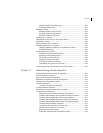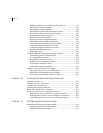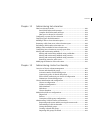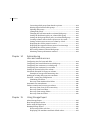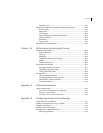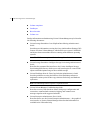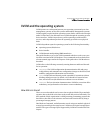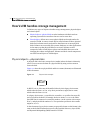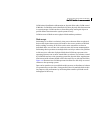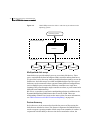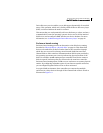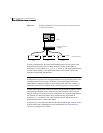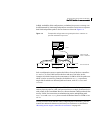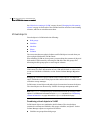
19Understanding Veritas Volume Manager
VxVM and the operating system
VxVM and the operating system
VxVM operates as a subsystem between your operating system and your data
management systems, such as file systems and database management systems.
VxVM is tightly coupled with the operating system. Before a disk can be brought
under VxVM control, the disk must be accessible through the operating system
device interface. VxVM is layered on top of the operating system interface
services, and is dependent upon how the operating system accesses physical
disks.
VxVM is dependent upon the operating system for the following functionality:
■ operating system (disk) devices
■ device handles
■ VxVM dynamic multipathing (DMP) metadevice
This guide introduces you to the VxVM commands which are used to carry out
the tasks associated with VxVM objects. These commands are described on the
relevant manual pages and in the chapters of this guide where VxVM tasks are
described.
VxVM relies on the following constantly-running daemons and kernel threads
for its operation:
■ vxconfigd—The VxVM configuration daemon maintains disk and group
configurations and communicates configuration changes to the kernel, and
modifies configuration information stored on disks.
■ vxiod—VxVM I/O kernel threads provide extended I/O operations without
blocking calling processes. By default, 16 I/O threads are started at boot
time, and at least one I/O thread must continue to run at all times.
■ vxrelocd—The hot-relocation daemon monitors VxVM for events that affect
redundancy, and performs hot-relocation to restore redundancy.
How data is stored
There are several methods used to store data on physical disks. These methods
organize data on the disk so the data can be stored and retrieved efficiently. The
basic method of disk organization is called formatting. Formatting prepares the
hard disk so that files can be written to and retrieved from the disk by using a
prearranged storage pattern.
Hard disks are formatted, and information stored, using two methods: physical-
storage layout and logical-storage layout. VxVM uses the logical-storage layout
method. The types of storage layout supported by VxVM are introduced in this
chapter.



